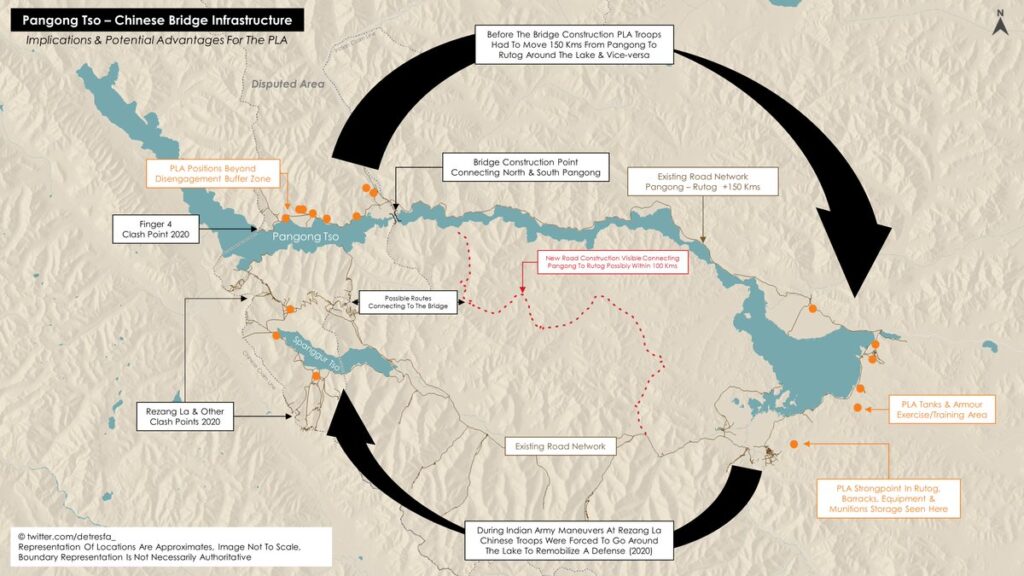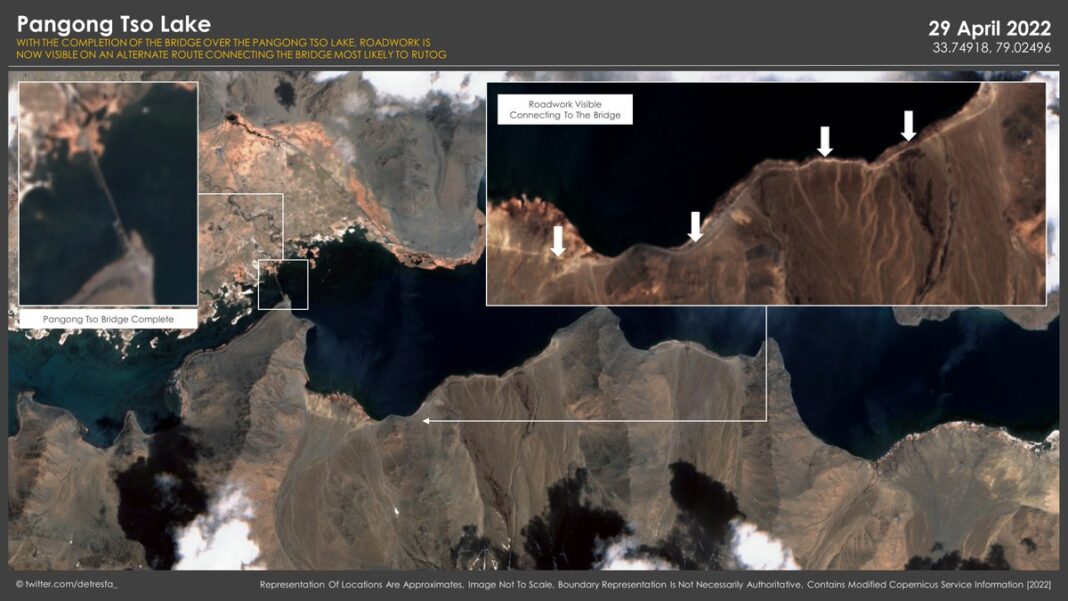China has completed the construction of a strategic bridge over Pangong Tso on territory it holds in Khurnak, the narrowest part of the lake that straddles Ladakh and Tibet. It’s now building roads to connect this to one of its biggest military garrisons in the region, the latest satellite pictures show.
In January this year, ThePrint reported that the Indian defence and security establishment had found that a bridge was being built with pre-fabricated structures over the northern part of Pangong Tso.
Sources had said that this was being built to counter any future moves by the Indian Army on the lines of its August 2020 operation, which led to the capture of dominating heights on Pangong Tso’s southern banks.
The bridge, which was completed in the first week of April, will cut down a 180-km loop from Khurnak to the south banks through Rutog county in Tibet, where the People’s Liberation Army (PLA) has an important garrison.
The latest satellite imagery of the locations shows that the Chinese have now also started road construction work.

Satellite imagery expert Damier Symon, who is popularly known by his Twitter handle @detresfa_, put out the picture stating that road works have begun to join the bridge most likely to Rutog, to ensure that Chinese soldiers can move in quickly.
The PLA had earlier initiated road cutting from the bridge, and the road will add to a new route for faster deployment of soldiers and materiel.
Explaining why the Chinese were building the bridge, a source in January had said, “They have probably learnt the lesson and since they are quick in taking remedial measures, multiple steps have been initiated to ensure that their movement through that area is quicker and have the ability to scale up presence in a big way”.
Infrastructure build-up
While the stand-off was on in the southern banks of Pangong Tso, between September 2020 and mid-2021, the Chinese had built a new road to the Moldo garrison to circumvent the visibility arc of the Indian soldiers and equipment on top of advantageous heights.
As reported by ThePrint earlier, China ramped up its infrastructure build-up along the Line of Actual Control (LAC) even during the stand-off. This included the construction of new roads, surface-to air-missile sites, heliports, and dwellings among others.
India, too, has carried out infrastructure build-ups along the LAC with the construction of new roads, tunnels, underground ammunition depots, and the induction of new warfighting equipment.

